Choosing the right pricing model for your B2B SaaS product is a strategic choice, one that can make or break your entire business.
Your pricing strategy sets the tone for how customers perceive value, influences their purchasing decisions, and ultimately impacts your bottom line. For B2B companies, pricing appropriately can be the difference between meteoric expansion and failure to get started.
What's actually on the line when you price?
A well-crafted pricing strategy can accelerate customer acquisition by removing barriers to entry, enhancing retention by aligning costs to value delivered, and maximizing revenue by capturing what customers are truly willing to pay. Poor pricing, however, can leave money on the table, create friction in the sales process, or even drive prospective customers straight to your competitors.
In this guide, you'll discover the top B2B SaaS pricing models, their strengths and weaknesses, and how to choose the best one for your business. Whether you're launching a new product to market or overhauling your current strategy, you'll have the insights to make pricing decisions that will drive sustainable growth.
What Are SaaS Pricing Models?
Essentially, a SaaS pricing plan is the method through which you bill your clients for your software. It's less about picking a number and more about crafting a system that reflects the value that you're delivering, aligns with the way that customers are using your product, and supports your business goals. For companies seeking highly specialized expertise, such as top .net developers, the pricing model may need to reflect the value of the skilled workforce that drives their product's development and success.
Think of your pricing strategy as the bridge between the value that you capture and the revenue that you earn. It answers fundamental questions: Are you going to charge per user, per feature, or per usage? Are they going to pay monthly or annually? Do you have a free version, or do you require them to pay upfront? Those are the things that impact everything from your product development roadmap to your sales process.
Why Pricing Models Matter in B2B SaaS
In the B2B space, pricing strategies carry even greater weight than in consumer markets. Your customers are investing heavily, usually with multiple stakeholders and lengthy evaluation periods. The right pricing model can:
- Reduce the cost friction of the buying process by making costs explainable and justifiable to customers
- Align your incentives with your customers so that they get more value for paying more
- Enable smooth scaling for your business as well as your customers, as their needs expand
- Differentiate yourself in a crowded marketplace by conveying your unique value proposition
A misaligned pricing strategy, in turn, can offer barriers at every stage of the customer lifecycle. It may make your product appear too expensive for small communities, too risky for companies, or too complex to value effectively. In fact, B2B SaaS companies today notice an average churn rate of 3.5 %, where pricing mismatch is quite frequently quoted as a main cause of intentional churn.

Key Factors Influencing Pricing Decisions
The choice of a proper pricing model is not a blanket undertaking. What you must base your choice on is several important considerations:
Market Fit and Customer Base: Do you target startups, mid-market companies, or enterprises?
Your freemium model might price out enterprise buyers that require white-glove service, while an enterprise-level model might cut out the small businesses that would be your biggest advocates.
Competitive Landscape: What is your competition pricing, and how are they structuring their prices? Don't copy them, naturally, but having competitive benchmarks will make it simpler to position your product. If your entire industry prices per user, a shift to usage pricing could either be a shining differentiator or a confused departure from norms.
Value Perception: In what metrics do your customers measure the value they get from your product? If your product is a time-saver, you can price in hours saved. If it is a revenue-generating activity, some share of the value created may be suitable. The closer your pricing mechanism is to perceived value, the easier it is to demonstrate cost-justification and reduce churn.
Cost Structure and Margins: Your rates need to cover not just the cost of offering the service, but also acquisition, support, and maintenance. Understanding your unit economics guarantees your pricing model will be sustainable when you scale.
Growth Stage: Early-stage businesses can focus on rapid adoption through aggressive pricing, while established organizations can focus on generating maximum revenues from the existing customer base. Your price strategy will need to shift as your business expands.
Benefits of Choosing the Right SaaS Pricing Model
Having your pricing model correct is not just about avoiding errors; it's about releasing massive gains that compound with time. When your pricing model best suits your business, it becomes a growth engine and not just a system of billing
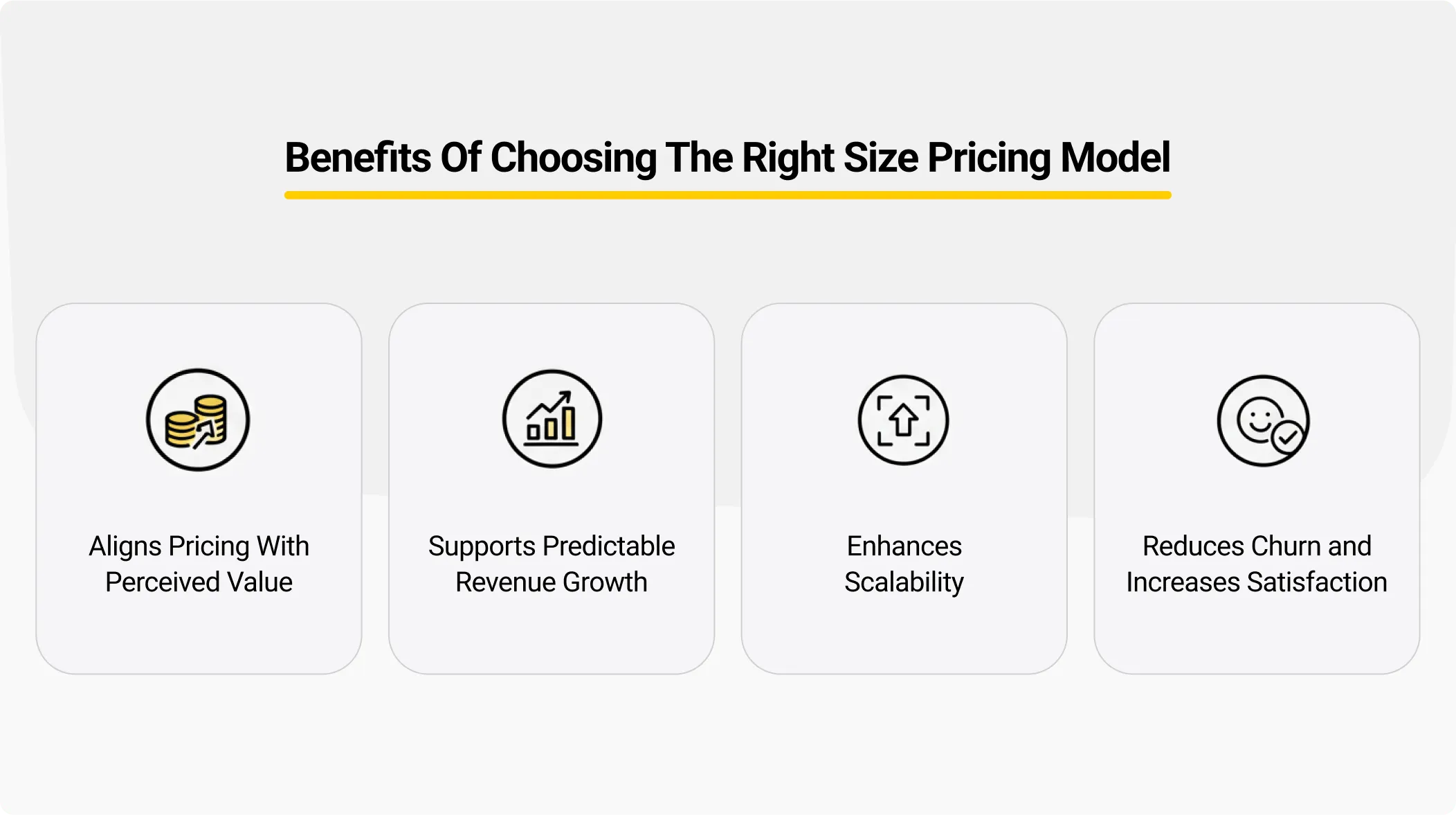
Aligns Pricing with Perceived Value
The best pricing models establish a clear connection between what customers pay and what they receive. When customers can simply observe that their investment grows as a multiple of the value they're receiving, pricing conversations shift from "Is this too expensive?" to "How do we add more value?" This alignment builds trust and makes renewals automatic rather than grueling bargains.
Consider a project management software that bills by project and not per user. If success is measured by how many projects customers complete, per-project billing makes sense. They're paying for literally the value unit that they value most.
Supports Predictable Revenue Growth
The right pricing model will give you visibility into future revenue, and you can more comfortably plan expansion, product development, and hiring. One-year contract subscription models provide predictability of revenue, and usage models can give you the upside potential as customers grow. What is important is choosing a structure where customer success naturally drives revenue growth for your business.
This foretellability extends to more than forecasting alone. When your pricing model is strong, you can invest in customer success initiatives with assurance, knowing that generating more value for customers will pay dividends at the bottom line.
Enhances Scalability
A good pricing model scales with your business without keeping you up at night with operations. It needs to be simple to explain to prospects, simple for your sales reps to quote, and simple for finance to manage. If you go from 10 customers to 1,000 customers, your pricing should not require a proportional level of administrative overhead.
Scalability also means the model operates across different customer segments. Pricing that allows for a 5-person startup and a 500-person company, without causing confusion or requiring ongoing custom negotiating, gives you the power to seize the full market opportunity.
Reduces Churn and Increases Customer Satisfaction
When customers understand what they are paying for and feel they are getting the right value, they become loyal. Transparent value-based pricing removes resentment of overcharging or anger at convoluted billing.
Furthermore, the right pricing model can preempt churn from the start. When your pricing scales gracefully with usage, customers never hit a "price wall" where a modest increase in their needs results in a dramatic jump in price. These smooth transitions keep customers happy, and your product feels like a long-term partner, not a vendor they need to rethink constantly.
The Most Common B2B SaaS Pricing Models
Having gained an understanding of why price models matter, let's look at the most prevalent approaches in the B2B SaaS space. All of them have pros and cons, and an understanding of these facts will help you decide which approach best suits your business needs and customer requirements.
1. Flat-Rate Pricing
Flat-rate pricing is simply elegant: single price, single product, all-you-can-have. Everyone pays the same monthly or yearly fee regardless of team size, amount of use, or features employed.
How it works: Charge one price that includes everything and anything you do. Whether the user has 5 people or 50, they all pay the same.
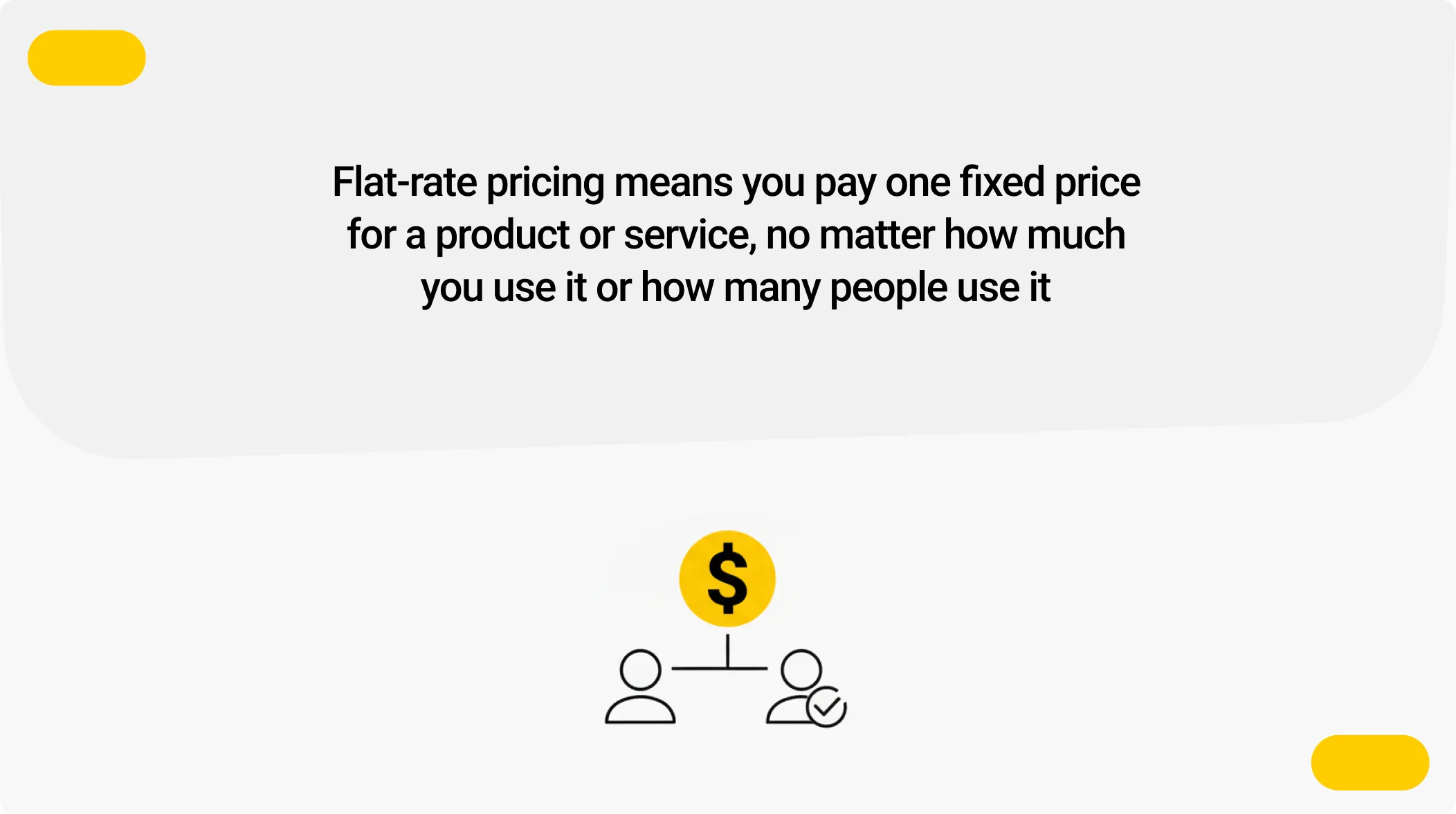
Advantages:
- The epitome of simplicity: No confusion at the time of sale, no complex arithmetic to justify, and no surprises on the invoice.
- Seamless budgeting: Customers are well aware of what they will be paying each month, which simplifies obtaining approvals and budgeting for expenses.
- Low overhead operation: No usage tracking, no tier management, no worries about customizing, just straightforward billing.
Drawbacks: The convenience that makes flat rate pricing so appealing also brings limitations. You'll inherently be leaving revenue on the table with larger customers who'd pay more for the value received, and potentially price out smaller customers who can't justify the cost for low use. It also doesn't come with a natural expansion revenue stream; once someone signs up, there's no way of growing the account unless you raise prices or add premium tiers.
Best for: Companies with a well-established product that delivers reasonably consistent value across company size, or companies selling to a clear, homogeneous market niche. It is particularly suitable for those products where usage is not greatly different between customers.
Real-world example: Basecamp offers a flat "Pro Unlimited" price, where companies pay a single rate for an unlimited number of projects and users with no added cost per user. Their stance is that pricing has to be transparent and easy to understand, and they've built their success on making things wonderfully simple.
2. Usage-Based (Pay-as-You-Go) Pricing
Usage-based pricing charges for consumption. Consumers pay for whatever it is they consume, be it API calls, data processed, emails delivered, or some other quantity of value that can be quantified.
How it works: You set a usage measurement consistent with value delivery and price in relation to volume. It may be a simple per-unit charge or volume discounts as volumes increase.
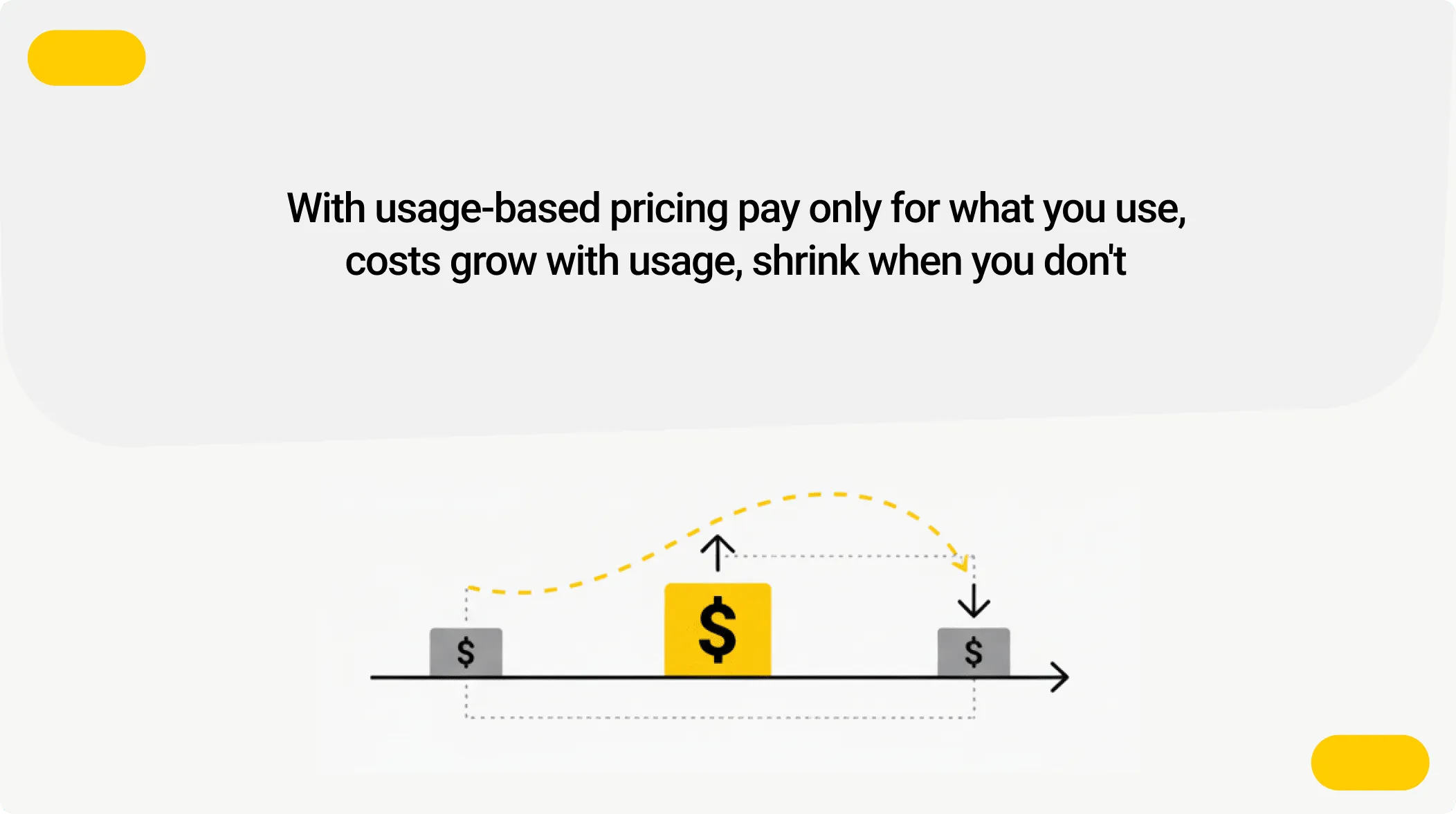
Advantages:
- Perfect value alignment: As people get more value and utilize your product more widely, your revenues increase by themselves.
- Removes artificial constraints: No resistance to "running out" of assigned resources; customers can consume as much as they require.
- Feels fair to customers: They only pay for what they actually use, so it is easier to justify the cost of admission.
- Scales naturally: Accommodates everyone from tiny startups to giant companies without rearranging.
Drawbacks: Cost uncertainty makes consumers anxious, particularly finance departments that need to forecast expenses. Uncertainty cuts both ways; your revenues also fluctuate wildly month by month. In addition, heavy users might go to considerable lengths to reduce usage in an attempt to save, creating misaligned incentives. The model requires robust tracking and billing infrastructure, adding technical complexity.
Best for: Products for which value clearly relates to use, e.g., infrastructure services, communications platforms, or data-processing applications. It is particularly effective when the usage by the customer is variable, seasonal, or rapidly growing.
Real-world examples: AWS brought usage-based pricing to cloud infrastructure, charging for compute hours, storage, and data transfer. Twilio does the same for API calls, and SendGrid charges in tiers based on emails sent. These companies have shown that when executed correctly, usage-based pricing can scale from individual developers to Fortune 500 enterprises
3. Per-User Pricing
Per-user (or seat-based) pricing charges customers based on the number of people using the software. It's one of the most common models in B2B SaaS, and it's not surprising why; it's intuitive and grows linearly with team size.
How it works: You charge a fee per user per month (year), and clients pay times their team size. Some models have active users only, while others charge for all accounts registered.

Advantages:
- How it works: You charge a per-user per-month (or per year) rate, and customers pay times their team size. Versions include active users only and versions that charge for all accounts registered.
- Highly intuitive: Easy to understand and articulate, "How many people need to have access?" is the central question.
- Repeat revenue growth: Revenue grows organically as clients expand their teams.
- Clear growth path: Inbuilt process for account expansion without altering the price model.
- Easy to use: Simply watch user accounts, no sophisticated usage tracking required.
Drawbacks: This model can inadvertently dissuade adoption in customer organizations. People may share accounts or limit access to others in order to keep the costs low, reducing the value that they derive from your product. It can also be unfair if there are power users among a set of users, and others log in periodically. In products where collaboration and widespread adoption create value, artificially limiting the number of users can hurt both customer success and your own growth opportunities.
Best for: Products where every user derives a different value, particularly personal productivity software, project management, or role-based software. It is less suitable for products where broad organizational use is critical to success.
Real-world examples: Slack employs per-user pricing in its Fair Billing Policy, charging only for active users and giving credit for inactive users. Salesforce, HubSpot, and Zoom use per-user models effectively, each modifying them to their needs; Salesforce by using role-based plans, and Zoom by charging per host, not per participant.
4. Tiered Pricing
Tiered pricing has multiple tiers at different prices, each with a specific set of features, usage limits, or support levels. It is the dominant model used in B2B SaaS currently.
How it works: You develop stand-alone packages (usually 3-4 levels) such as Basic, Professional, and Enterprise with distinct features and capabilities. The customers select the tier that suits their needs and their finances.
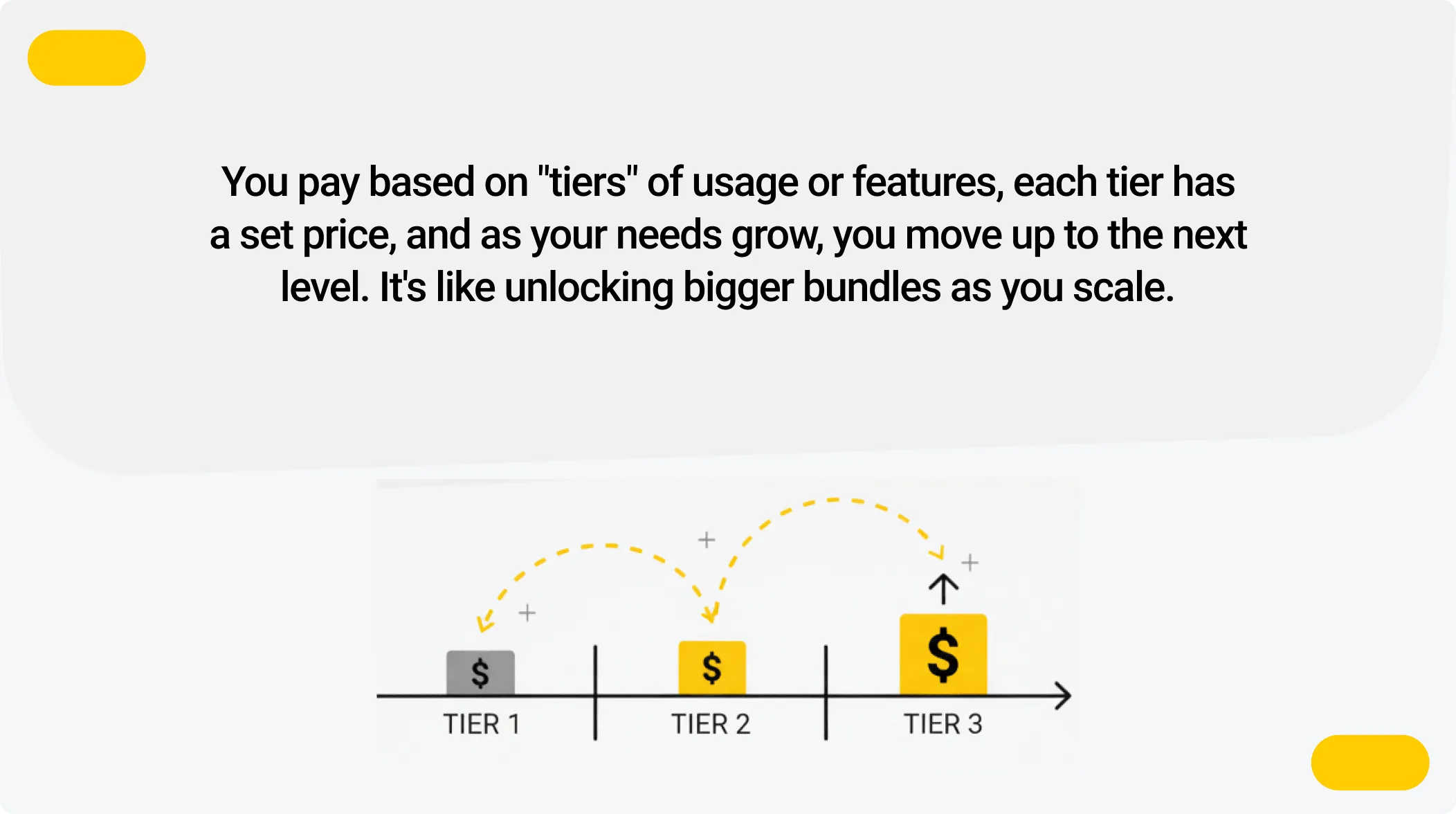
Advantages:
- Customer selection: Allows prospects to find their "Goldilocks" option that fits their needs and price range.
- Clean upgrade path: Builds organic expansion revenue as customers' requirements grow.
- Market segmentation: Small companies start at the lower levels and big businesses buy at the top, embracing the whole market.
- Psychological anchoring: The middle level tends to become the sweet spot, with most customers opting for it to feel neither cheap nor wasteful.
- Improved margins: Offer reserve premium features and support to more profitable customers.
Drawbacks: It's hard to make good tiers. Place them too close together, and people won't shell out for upgrades. Place them too far apart, and you'll have the wrong customers in each tier, paying for something they didn't want or limited by restrictions that frustrate them. And there's the threat of feature creep as you try to make tiers separated. People will find ways to beat the system by taking lower tiers and finding workarounds around restrictions.
Best for: Companies with more than one customer segment, products that have significantly different feature differentiation, and companies wanting to reach customers on different price points, and yet possess a clear upgrade path.
Real-world examples: HubSpot utilizes Starter, Professional, and Enterprise plans to match growing business needs. Mailchimp uses tiered plans that grow in features and contact numbers, enabling it to cater to freelancers to businesses. Asana and Monday.com use tiered plans to segment access depending on team size and advanced features.
5. Freemium Model
The freemium model has a high-value free version of your product along with paid premium tiers. It's not a test; it's a free mode forever to stimulate take-up and monetize a subset of users.
How it works: You provide core functionality for free with strategic limits (users, features, usage, or support), then charge for paid plans that remove these limits or add high-end features.
.webp)
Advantages:
- Drastically reduces barriers: Customers perceive the value of your product, and then they do not commit their money.
- Drives rapid expansion: Has the potential to create viral adoption when free users refer their friends and co-workers.
- Bottom-up enterprise adoption: Teams begin with free plans, realize value, and then upgrade to paid accounts.
- Word-of-mouth marketing: Free users become evangelists, generating organic promotion you couldn't pay for.
Drawbacks: It takes money, infrastructure, customer support, and non-billable resources to host free users. If your conversion rate from paid to free is too low (it's generally good to be 2-5% typical), you're operating a charity. Determining what to put in the free tier is an artful balancing act, too little value and people won't stick around, too much and they'll never pay. There's also cannibalizing paid conversions when the free tier is too generous.
Best for: Such products are characterized by having low marginal costs to serve additional users, positive network effects where increased users favor everyone, and products whose prolonged use generates habit and addiction. It works best when you have a clear conversion trigger (running up against a limit or needing a minimum premium feature).
Real-world examples: Slack has a free version that exclusively stores message history for 90 days and forces groups to pay to have archives. Notion offers plenty of free usage to a single person, but it is paid for by groups and power capabilities. The free plan offered by Zoom will only support group meetings lasting up to 40 minutes, after which heavy use is automatically upgraded to a paid scheme.
6. Per-Feature Pricing
Per-feature pricing (also known as à la carte or modular pricing) enables customers to assemble their own package by selecting only the desired features, with each unit being paid for separately.
How it works: You do not sell bundled levels but charge for every significant module or feature individually. Customers start at a base level and add functionalities where needed, creating a customized package.
.webp)
Advantages:
- Most flexible: Customers never pay for untapped capabilities, only what they need.
- Revenue optimization: Allows customers to choose high-priced features without promoting an entire tier.
- Fitted to perfection: For those with particular, highly defined requirements, it seems bespoke.
- Transparent feature monetization: Add new features to the menu without rearranging existing pricing.
Drawbacks: The biggest issue is one of complexity. Having too many options creates paralysis by analysis and exhausts sales dialogue. It's difficult for finance teams to budget when features are selected à la carte. From a product perspective, you're really having to support multiple iterations of your product, which only adds to development and testing complications. There's also the risk of customers cherry-picking the most profitable features and bypassing others, fragmenting your optimum customer package.
Best for: Complex products with autonomous, distinguishable modules where the customers have various needs. It fits best for application in industries where personalization is expected and when selling to discerning buyers who know their needs precisely.
Real-life examples: Zendesk offers tiered pricing with modular add-ons such as Support, Chat, Talk, and Guide, though some are bundled into its Suite plans. Microsoft 365 enables the purchase of individual apps or add-on services in addition to bundles. The majority of enterprise software vendors use this approach by selling additional modules and integrations.
7. Hybrid Models
Rather than opting for one model, the majority of successful B2B SaaS companies combine a handful of different models to settle on hybrid pricing that capitalizes on each model's strength without its weaknesses.
How it works: Hybrid models blend two or more price dimensions. Common combinations are tiers + per-user pricing, usage-based + minimum commitments, or freemium + usage charges.
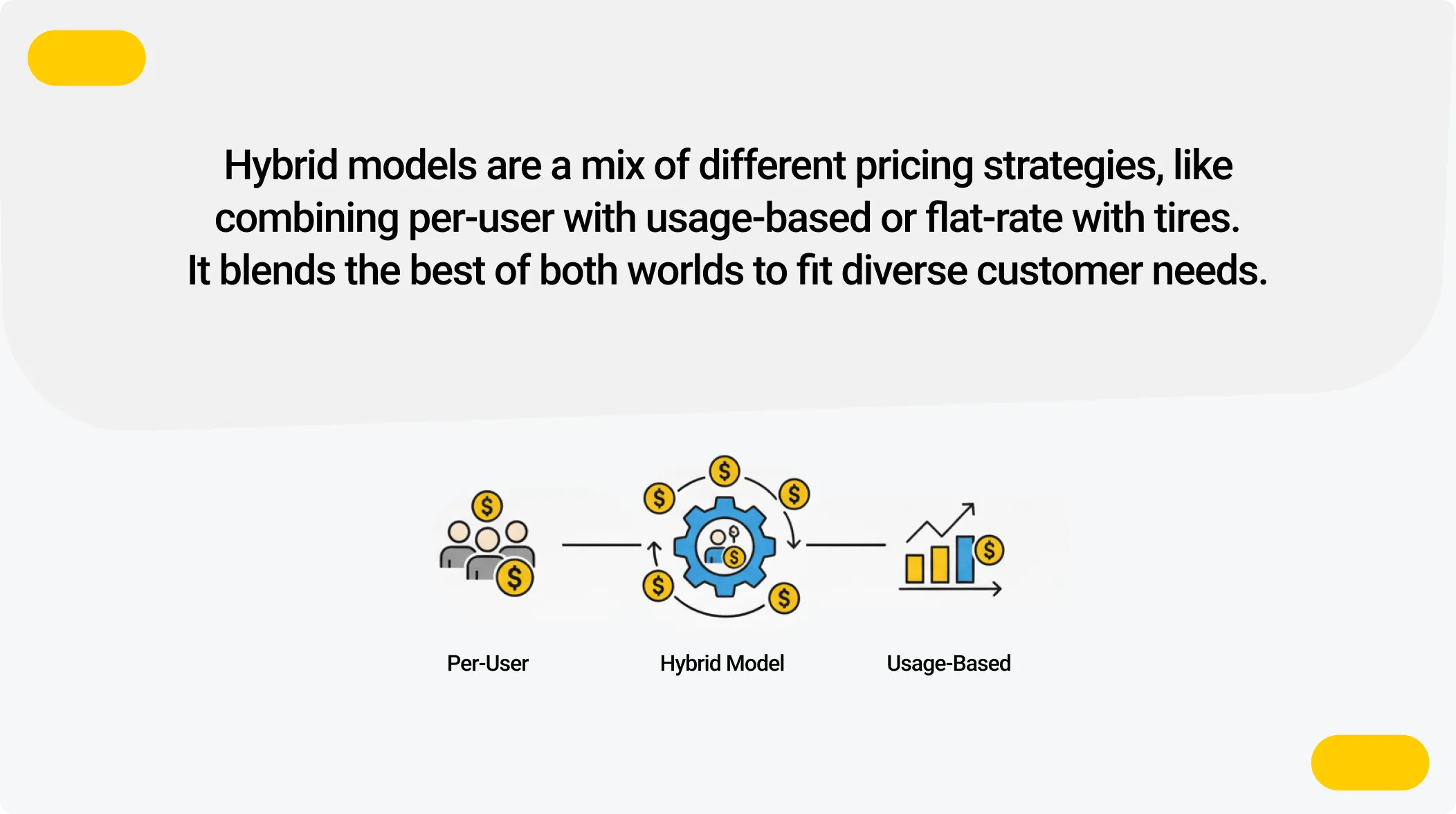
Advantages:
- Multi-objective optimization: Provide price flexibility while attaining revenue predictability.
- Balance rival demands: Merge simplicity with equity amongst different use cases.
- Serve several segments: Better address various customers' requirements using a single price.
- Several paths for expansion: Customers can upgrade levels, add users, or expand usage, providing you with several paths for revenue expansion.
Drawbacks: The obvious trade-off is complexity. The more price dimensions you have, the harder it is for your customers to understand and predict cost. Sales cycles are longer as buyers struggle to model their costs under a range of assumptions. Your billing and revenue recognition processes are more complex, too, and explaining your pricing simply in marketing collateral is challenging.
Best for: Companies with multiple segments of customers, products wherein value drivers vary across segments, or firms that have grown beyond simple models and need higher-end pricing to drive the highest revenue.
Real-world examples: Snowflake blends spend commitment contracts with usage-based storage and compute pricing, giving businesses predictability and flexibility. Intercom combines seat-per-user fees with usage-based fees for messaging and add-ons. Datadog charges by host and also charges for data ingestion and add-on modules, with cost pegged to both the size of infrastructure and use.
Choosing Your Path Forward
Each of these models has worked for many different companies in many different circumstances. The key is not only understanding how each of them works, but also why they are successful with certain businesses and customers. Think about how clients measure value when you are trying to decide which model works best for your product. Think about how clients prefer to budget and buy software, and what kind of relationship you want to have with them. Your revenue model is not all about money; it's about creating an economics that permits customer success and building a repeatable, scalable business.
SaaS Pricing Psychology and Best Practices
You've chosen your pricing strategy, but that's only half the fight. How you frame and organize your pricing can play a gigantic role in conversion rates and revenue. Let's take a closer look at the psychological forces that separate great pricing from great pricing.

Anchoring and Price Positioning
Ever ask why most SaaS pricing pages have a "Most Popular" badge at one level? That was no coincidence. When customers have multiple options, they need direction. That little badge reduces decision anxiety and provides social proof; if others chose this, it must be the right choice.
Presentation matters, too. Your price levels must step logically, with clean differentiation, so the value jump among levels becomes obvious. Use visual design strategically, spacing, color, and typography to guide eyes naturally to your intended level. But this is the trick: each level must be satisfying for its constituency, not like a skeleton model designed to chivvy people into upgrading.
Pro tip: Your "most popular" tier should actually be what most customers choose. Authenticity matters. Usually, this is your median tier, the place where value and price find each other most agreeably.
Annual vs. Monthly Billing
Here's the trick rate: 15-20% reduction for annual commitments. That's two free months, which is sufficient to encourage action without seeming needy. Package it smartly: "Save 2 months with annual billing" is more tangible than "15% discount."
But consider the consequences. Monthly billing gives you cash upfront (great for runway), and month-to-month billing reduces risk for customers (great for conversion). Early-stage companies will try to push stronger for yearly sales, whereas established players stay nimble. Be aware of where you are and price accordingly.
Quick win: Offer quarterly invoicing as a concession. Less intimidating than annual, but still shows commitment.
Transparency over "Contact Sales"
If you must show your prices or hide them behind "Contact Sales," here's the truth: transparency is winning.
Today's B2B purchasers, especially younger ones, are anticipating seeing prices immediately. They want to analyze choices independently prior to talking with sales. Hiding prices sends the message that you're ashamed of pricing or expecting tough negotiations. Neither is very trust-building.
Reveal your prices when:
- Your item contains commodity value that isn't heavily customizable
- Most buyers can self-qualify a level and get started
- You have to accelerate sales cycles and pre-qualify leads
Use "Contact Sales" when:
- You're selling highly customized, high-complexity enterprise solutions
- Pricing actually varies based on one-of-a-kind requirements
- But even there, you may want to display starting prices or price ranges
Here is the middle ground: Show prices for foundational levels, state that there are bespoke enterprise solutions. The majority of leads get the information they need, and you reserve room for bigger conversations.
Unless you're selling exclusively to businesses that expect advisory sales, go with transparency. Your prospects will thank you, and your salespeople will close deals faster.
Mistakes to Avoid in SaaS Pricing
No matter how good your pricing model and clever psychology, common pitfalls can scuttle your plan. These are the traps to avoid:

- Underpricing at initial stages:
It's easy to price low to get your first customers, but it creates problems that compound themselves in the long run. You're attracting price shoppers who will churn when you inevitably increase prices, you train the market to accept low prices, and maybe worst of all, you might not generate sufficient revenue to build a great product effectively. Price for the value you're creating, not the self-doubt you harbor.
- Too many or too few price levels:
Too few tiers are too basic (leaving revenue on the table), yet seven tiers cause decision paralysis. The sweet spot? Three to four tiers for most B2B SaaS companies. Each tier needs to be a clear customer segment with clean differentiation. If you can't explain why someone should pay to upgrade to tier 3 versus tier 2, then you probably have too many tiers.
- Misleading pricing structures:
If your prospects need to use a calculator and need a doctorate to figure out how much they're going to pay, you've lost them. Complexity kills conversions. One-sentence pricing is the limit. If you're adding multiple dimensions (per user + usage + features), make sure the value of the complexity is worth more than the friction it creates.
- Not aligning price with value measures:
User charging when customers are interested in done projects? Charging flat if the usage is 10x variation between customers? Misalignment breeds resentment. Your unit of price must match how your customers measure success. When they win, you need to win proportionally; that's when pricing is equitable.
- Overlooking pricing experiments and iteration:
Your first price won't be perfect. Neither will your second. The champions consider pricing to be an ongoing experiment, not a final game. Try different prices, test new packaging, and survey churned customers for price objections. Just don't flip so much that customers don't trust you. Quarterly or bi-annual review is a good cadence for big updates.
SaaS Pricing Tools and Resources
Ready to implement these learnings to make it happen?
The following are the tools and resources that will make pricing easy for you.
Pricing Calculators and Software
ProfitWell (by Paddle): was acquired by Paddle and offers free subscription analytics and pricing insights. You can benchmark performance, track metrics like MRR and churn, and spot optimization opportunities. While it doesn't show competitors' actual prices, it's a gold standard for subscription revenue analysis.
Chargebee: Along with managing billing, Chargebee allows for experimentation and A/B tests without affecting your billing process. It's perfect for SaaS businesses that want to experiment with new price points, introduce usage-based plans, or change plans easily.
Price Intelligently (by Paddle): Combines data-driven price research with seasoned consulting. Using survey-based approaches helps in finding the optimal price based on customers' willingness to pay. It's ideal for SaaS teams interested in a long-term monetization strategy.
Competitive Intelligence Tools
Kompyte: Automates competitor tracking, including feature launches, positioning, and sometimes pricing updates, so you’ll always know when rivals change their strategy.
SimilarWeb: While not a pricing tool per se, it gives strong insights into competitor traffic, engagement, and audience segments. Knowing their market position allows you to interpret better and understand their pricing moves.
The manual method: At times, the best technology is still a spreadsheet and regular competitor monitoring. Take screenshots of pricing pages every three months, record any variation, and identify emerging trends. Plain but extremely powerful.
One final tip: Join pricing and SaaS-oriented groups on LinkedIn or Slack. Learning from others who are wrestling with the same challenges will refine your strategy faster than any tool or book.
Your pricing strategy will evolve with your growing company. These tools will inform you, test with ease, and optimize wisely.
Future Trends in B2B SaaS Pricing
The pricing landscape is evolving rapidly. Here's what's coming next and what it will mean for your strategy.
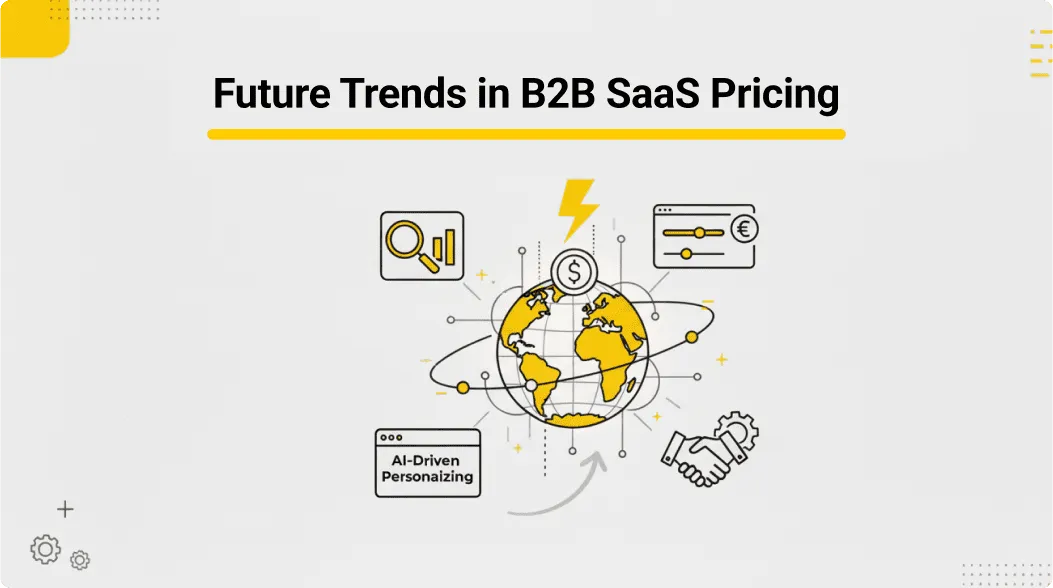
AI-powered dynamic pricing:
Visualize the price that is dynamically adjusted to customer activity, the market, and what the competitors are doing. It is happening with AI, which is no longer a fixed-price page but a dynamic system maximizing revenue immediately. Experimenters are already trying price suggestions that are determined by customer interaction patterns and probability of conversion. The catch? Optimization must be struck against transparency; the customers must still receive what they are paying for and why.
Outcome-based pricing:
Instead of charging seat or use fees, more companies are effectively pricing based on outcomes. Marketing automation tools charge based on leads captured, rather than emails delivered. Analytics tools are based on decisions made, rather than data processed. That's ultimate value alignment; you only get paid when customers win. It's risky (requires lots of product confidence) but highly effective in establishing trust and reducing friction.
Increased personalization:
One-size-fits-all pricing is going out. Expect more companies to offer custom pricing by company size, industry, use case, or even integration with complementary tools. The technology to deliver bespoke experiences at scale is now here, think dynamic pricing pages that fluctuate based on who's viewing them. The trick will be simplicity while delivering relevance. Nobody wants to feel like they're getting a worse deal than the business down the road.
What it means to you:
Stay nimble. Today's working pricing model might need to change tomorrow. Keep an eye on these trends, but don't chase shiny objects. Adopt new approaches when they truly serve your customers better, not just because they're new.
Ready to Build Your Winning Pricing Strategy with AI Bees?
So what's the right pricing model for your B2B SaaS firm? The honest answer: depends. But now you have the gizmo to figure it out.
That is what we have been taught: price models are not origin numbers at all, but strategic choices to determine the way your customers consider value, the way your revenue expands, and the way your business expands. Do you prefer a flat-rate simplicity or a usage-based fairness, or a tiered flexibility? The trick here is to set your prices in a way that correlates with the measuring success of the customers.
Now here is the big question: Is your pricing pulling its weight as it should?
If you're unsure about any of these, it might be time to refresh prices. Remember, incremental pricing improvements have disproportionate impacts on revenue, oftentimes more than any feature launch or campaign.
Ready to optimize your pricing strategy?
Download our Free SaaS Pricing Strategy Workbook, a free, step-by-step guide to reviewing your current price, identifying opportunities, and making changes that drive growth. It includes pricing calculation worksheets, customer value frameworks, and a competitive analysis worksheet.
Your pricing is not set in stone. It's a lever you can move to fuel growth, and now you know how to do it strategically.
FAQs on B2B SaaS Pricing Models
1. What is the best pricing model for a B2B SaaS startup?
The best pricing model for seed-stage SaaS businesses is normally freemium or tiered. Both of these models reduce the entry barriers, allow you to gain early adopters, and allow you to experiment with customers' willingness to pay. As your business grows, you can move to usage-based or hybrid pricing for greater scalability and revenue maximization.
2. How can I be sure that my SaaS pricing model is successful?
A strong pricing strategy is seen through steady revenue growth, minimal churn, and maximum satisfaction. Keep an eye on numbers like MRR (Monthly Recurring Revenue), ARPU (Average Revenue Per User), and Customer Lifetime Value (CLV). If customers upgrade or renew hassle-free regularly, your pricing is likely to be in alignment with the value being delivered.
3. Should B2B SaaS companies show prices publicly or use "Contact Sales"?
Transparency typically wins. Displaying prices builds trust and accelerates decision-making. Only utilize "Contact Sales" when your product is highly customized or enterprise-specific. A good compromise is to display starting prices or package ranges and offer customized quotes for large customers.
4. How often should I check or change my SaaS pricing?
Experts recommend reviewing your price every 6 to 12 months. Your market, your customers' feedback, and your changes in product all drive perceived value. Even small adjustments in price (like adding a new level or refining feature bundles) can make a huge difference to revenue and retention.
5. What tools can maximize SaaS pricing decisions?
Platforms like ProfitWell, Chargebee, and Price Intelligently (by Paddle) help you evaluate price performance, test new models, and derive customer willingness to pay. Use them together with competition tracking platforms like Kompyte or SimilarWeb for a full price intelligence solution.
The Ultimate Guide to SaaS Pricing
Download nowMake Loss Impossible
with Performance-Based Marketing

Personalized Campaigns with
Precisely Selected Prospects
.svg)
Analysis From Your Dedicated
Account Manager

with a Team of Growth Hackers
we Develop your Tailor-Made Strategy
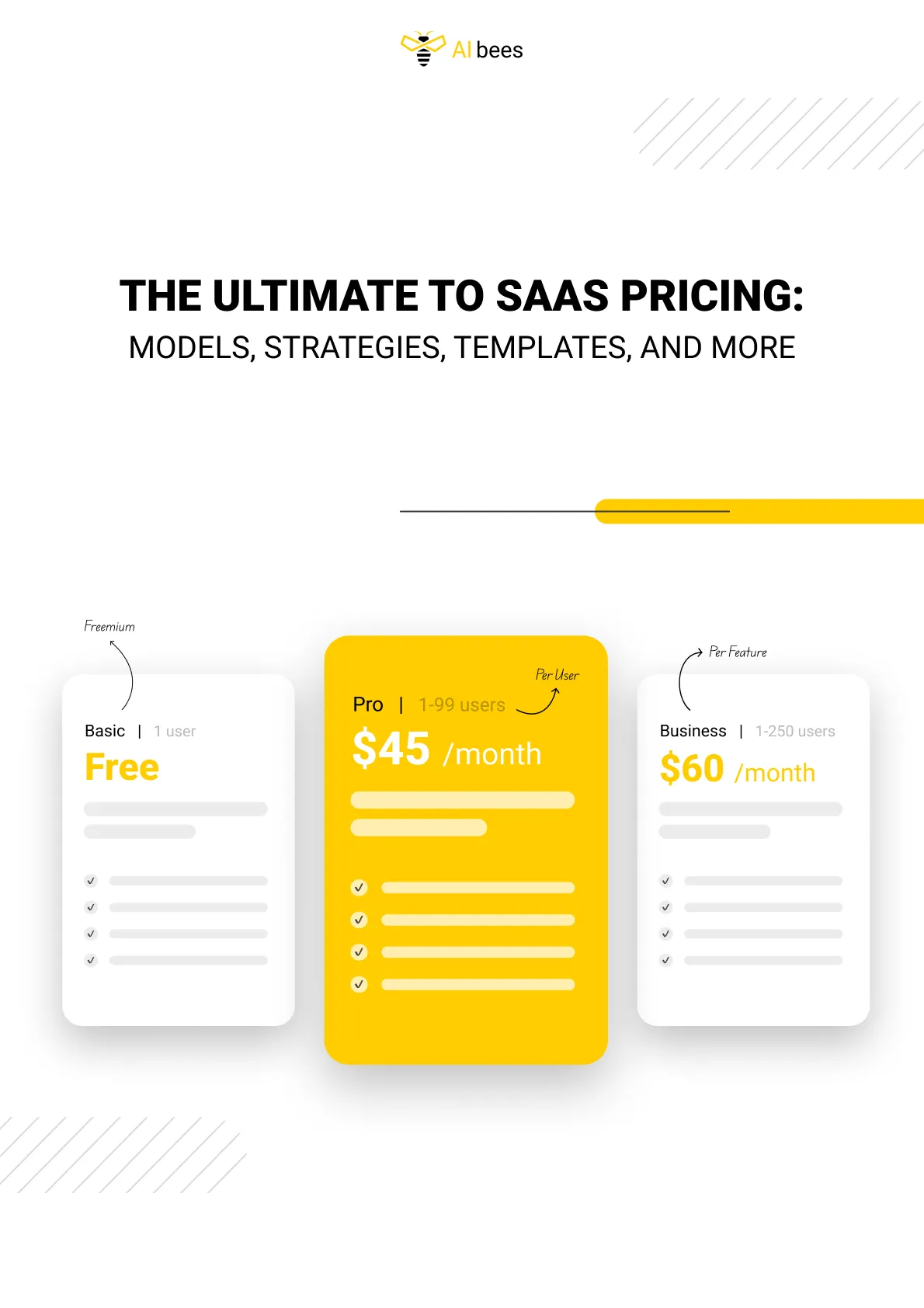

.svg)









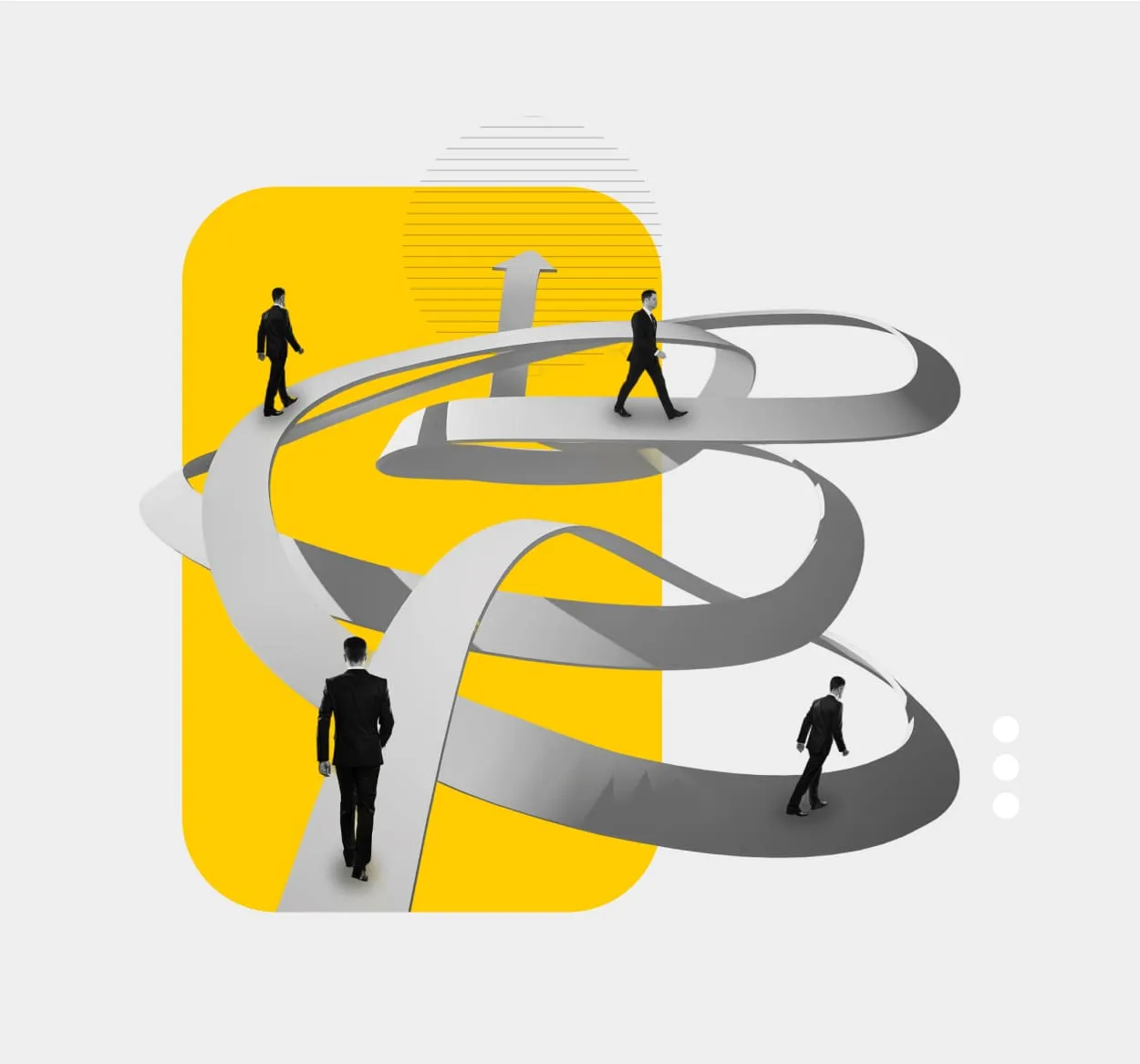


%201.svg)
.svg)





.webp)